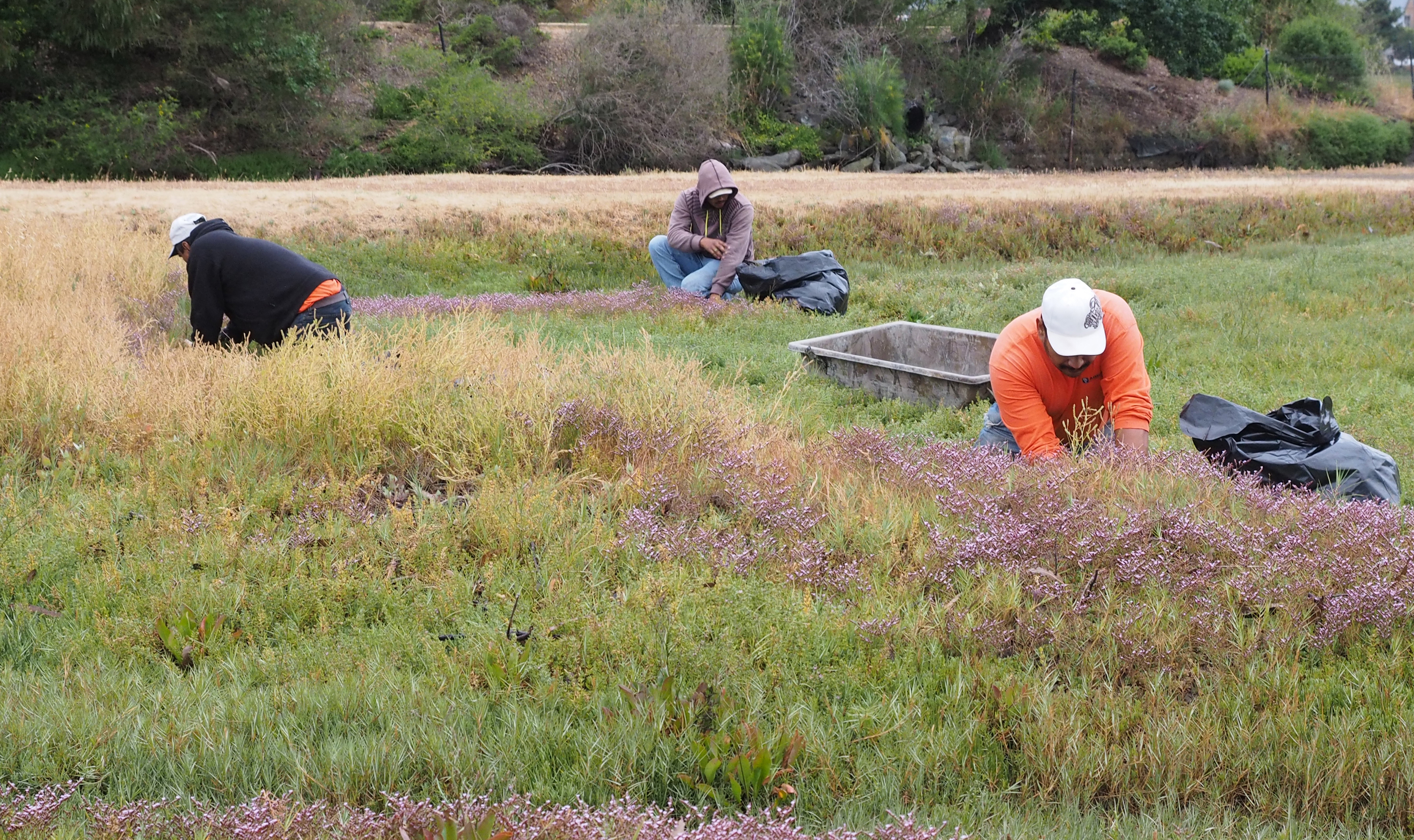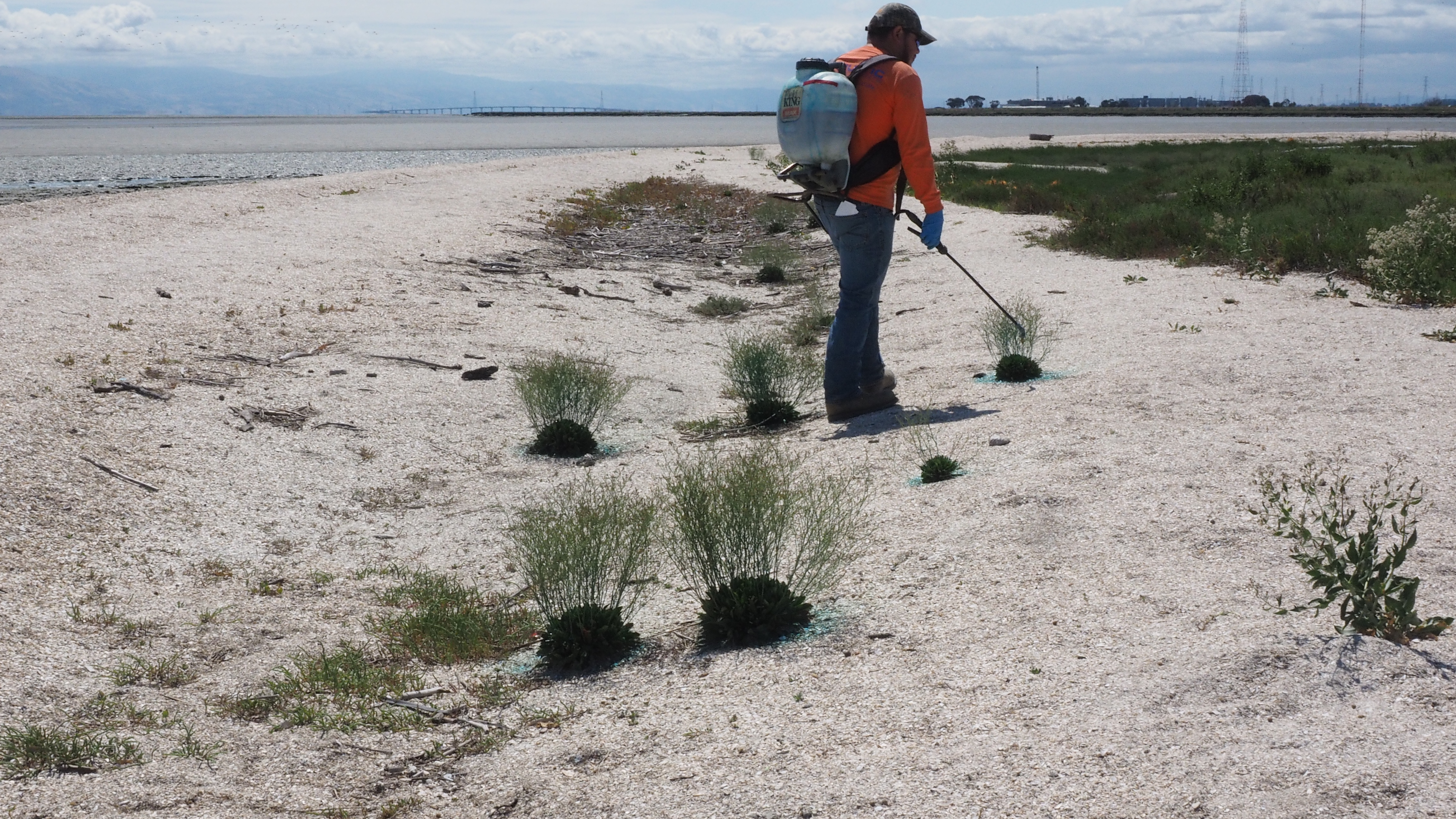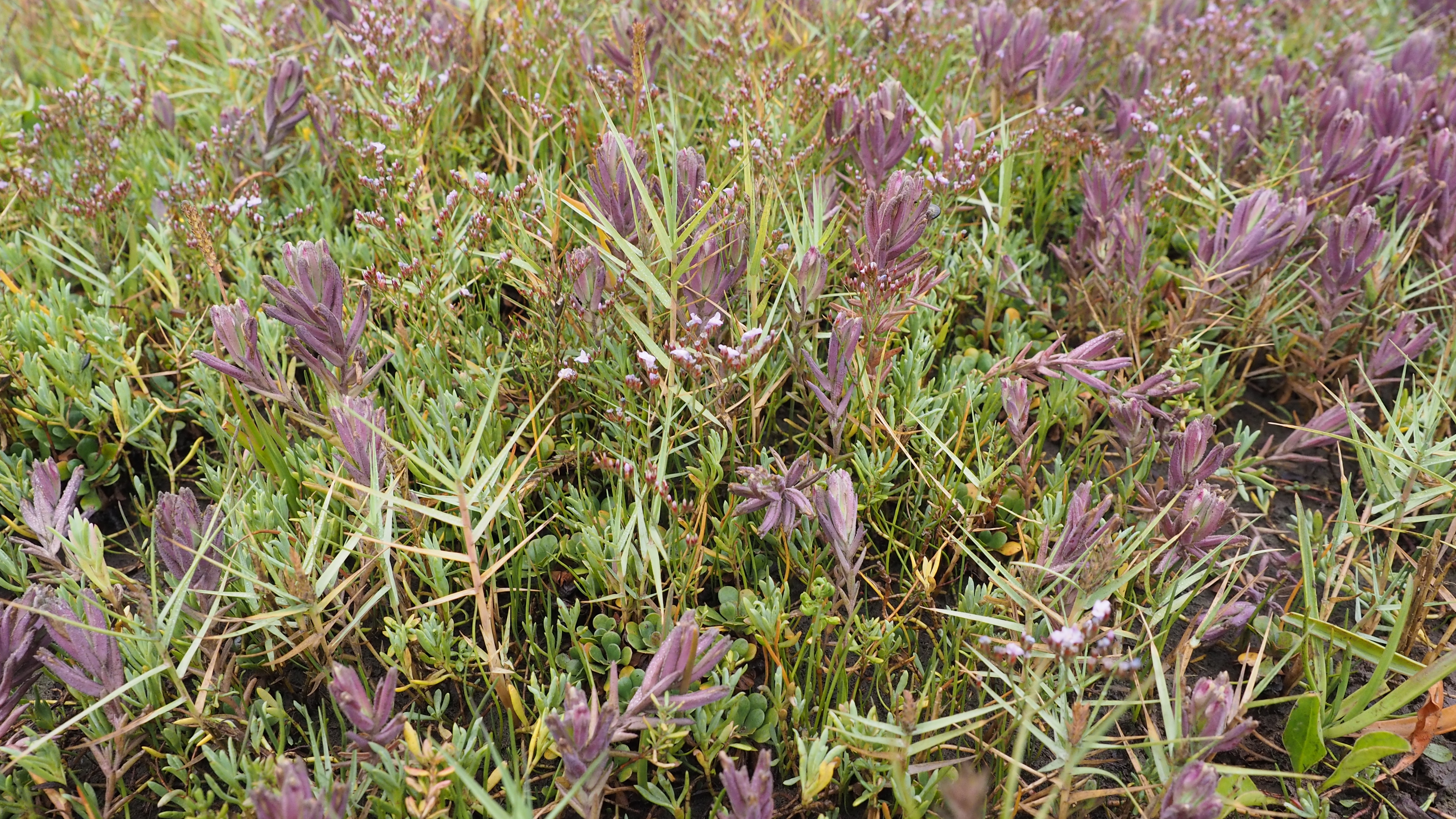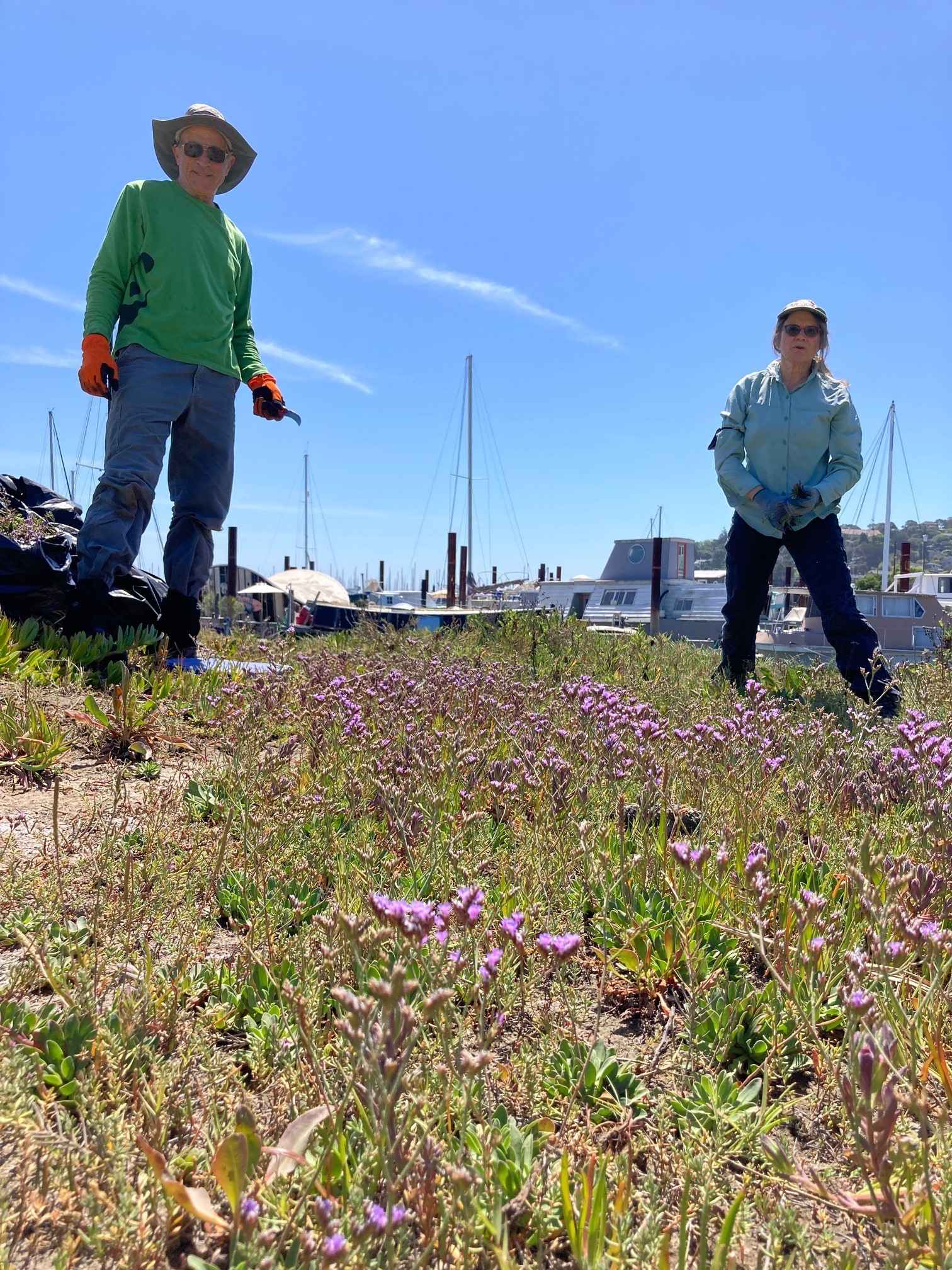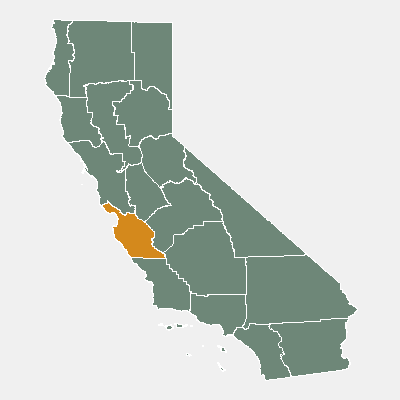SF Bay Sea Lavender Control
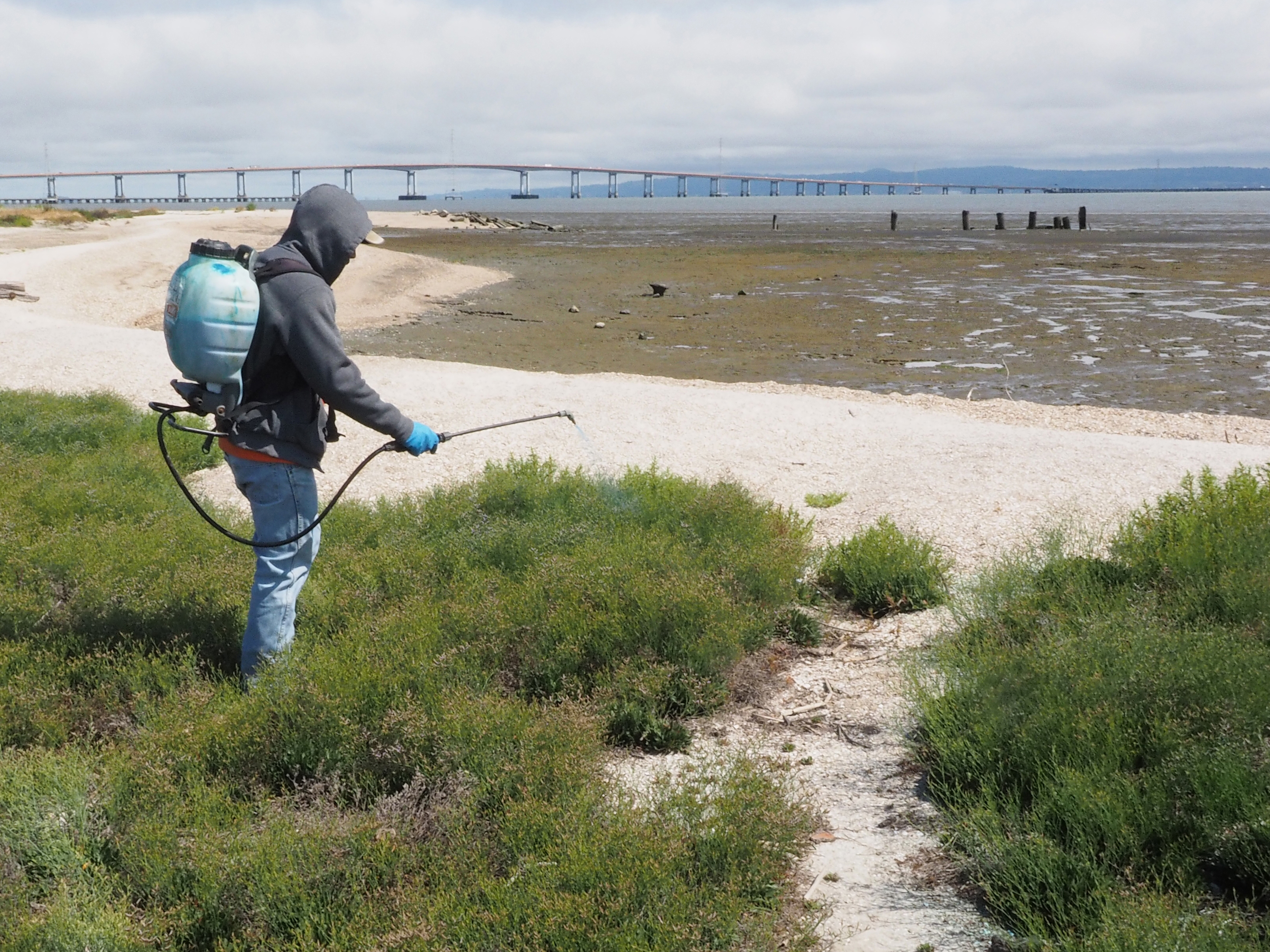
Cal-IPC and partners, including the US Fish & Wildlife Service prioritized Algerian sea lavender (Limonium ramosissimum) and European sea lavender (L. durisculum) as top management priorities to protect San Francisco Bay tidal marshes and wildlife like endangered Ridgway’s rails. Few weed species can grow in salt marsh habitat, but invasive sea lavender thrives, putting out up to 130,000 seeds per square meter which can then float to new locations.
Cal-IPC secured grant funding beginning in 2016 to delimit the extent of invasive sea lavender around the Bay and team with vegetation management professionals experienced at working in the tidal marsh environment. The project has been able to ramp up as funding was obtained from National Fish and Wildlife Foundation (NFWF), as well as from California Department of Food & Agriculture (CDFA) through County Agricultural Commissioners in the region.
Approximately 90 infestation sites have been mapped around the Bay, most in the Central and South Bay. Because we are addressing non-native Limonium early in its establishment, many of the populations are new and therefore relatively small. The largest infestations have been reduced significantly, some by 95%, through coordinated annual control work. But with an extensive seedbank and year-round growing season it will take years of continued vigilance to reduce invasive Limonium in the Bay to a low maintenance level. Thankfully, several volunteer organizations around the region are controlling local Limonium populations where it occurs in accessible areas – the work of organizations like these is an essential part of the long-term strategy.
Plants being managed
-
Limonium ramosissimum
Algerian sea lavender -
Limonium duriusculum
European sea lavender
Start date
2016Resources protected
Tidal marsh habitat supporting endangered wildlife including Ridgway’s rail and salt marsh harvest mouse, sensitive plants like salt marsh bird’s beak, and migratory waterfowl.
Project goal
Suppression of invasive sea lavender impacts in San Francisco Bay.
Project partners
- USFWS Don Edwards National Wildlife Refuge
- CDFW Eden Landing State Ecological Reserve
- San Francisco State University, Dept. of Biology
- Marin Audubon Society
- San Francisco International Airport
- County of San Mateo, Public Works Dept.
- Literacy for Environmental Justice
- Save the Bay
- SOLitude Lake Management
- Olofson Environmental, Inc.
- Golden Gate Bird Alliance
Project funders
- National Fish & Wildlife Foundation
- California Department of Food and Agriculture
- Alameda County Department of Agriculture
- Marin County Department of Agriculture
- San Francisco County Department of Agriculture
- San Mateo County Department of Agriculture
- Santa Clara County Department of Agriculture
- City of Mill Valley, Dept. of Public Works
- City of Burlingame, Public Works Department
Project photos
